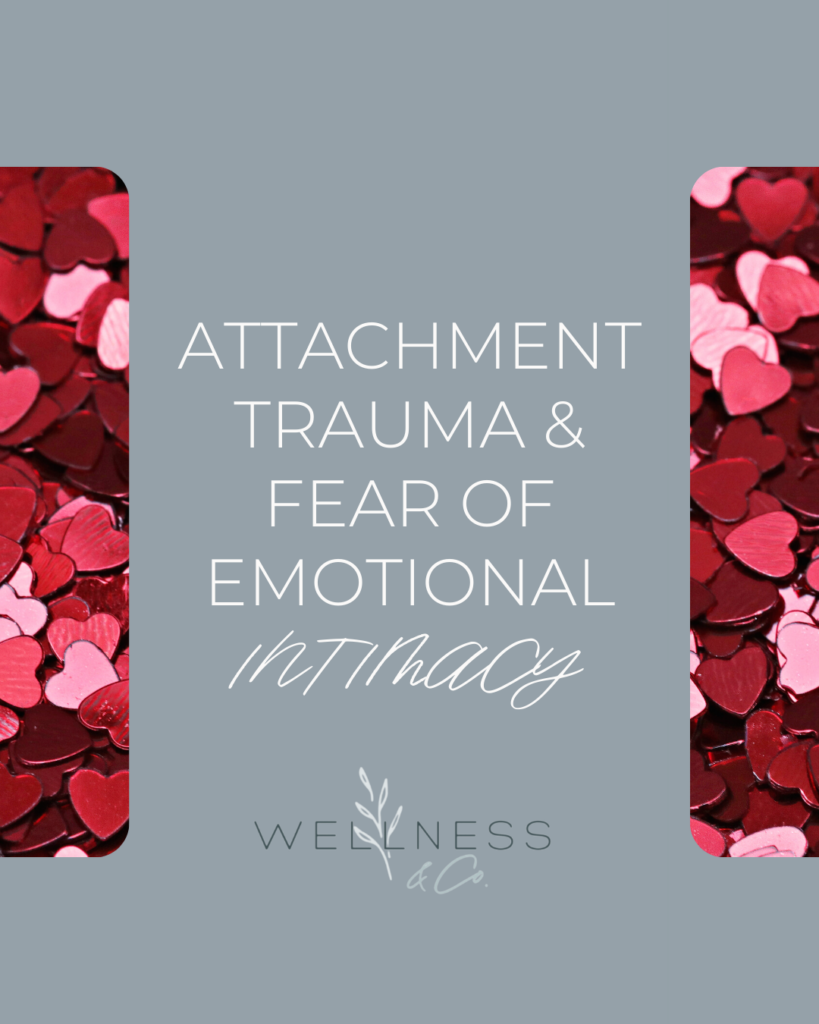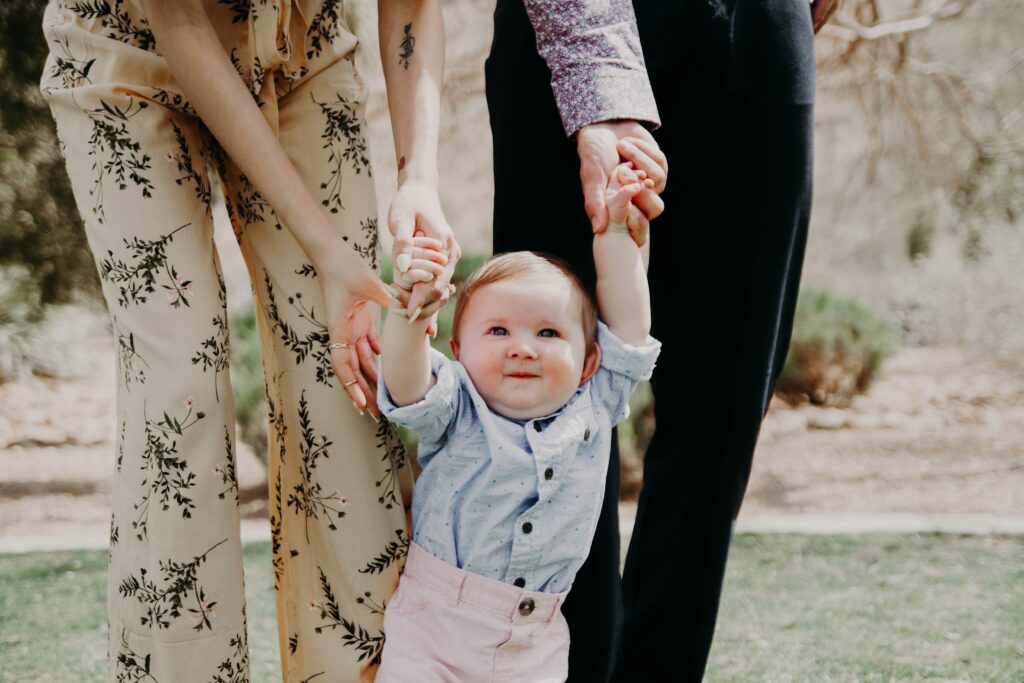Follow
Wellness & Co.
Hi, I'm Dr. K, Wellness & Co. is a growing therapy/coaching practice and educational hub for prospective clients based in Maryland and virtual clients all over the world!
Hi, I'm Dr. K
free guide
e -books
e -course
Attachment Trauma & Fear of Emotional Intimacy
October 4, 2023
By Brittany Moffitt, LICSW

You know that feeling, don’t you? The one that’s perfectly summed up in an N’SYNC lyric: “It’s tearin’ up my heart when I’m with you, but when we are apart, I feel it too. And no matter what I do, I feel the pain, with or without you”. It’s a feeling we’ve all danced to at some point. We all desire love, safety, and connection but what if the human desire to connect also comes with great fear of abandonment or rejection? Sometimes a hardened shell forms, to keep us protected from the pain of being too vulnerable or emotionally intimate with another.
Let’s journey into the emotional dance of attachment trauma, which continues to play in adulthood, unless we begin to heal our early relationship wounds.
What is attachment trauma? As early as childhood, we look to our primary caregivers to fulfill our basic needs for food, love, safety, and connection. For some people, those needs were met consistently forming a secure attachment. For others, it was a bit rockier. If you grew up with a parent who was narcissistic, emotionally absent, inconsistent, unpredictable, or even chaotic at times, this may have impacted the way you view relationships in adulthood. In the background of your life, a subtle tune plays that says relationships are not safe and emotional closeness cannot be trusted. What we are discussing here are the effects of attachment trauma. As social beings, we are wired to seek secure bonds with others. The desire to connect with others is a natural and innate human response.

Does fear get in the way of closeness in our relationships?
Fear can dictate our every move when it comes to relationships, like a skilled choreographer. It directs the steps of how our mind, body, and heart should respond to keep ourselves safe from hurt, rejection, abandonment, and shame. Fear has learned to pay attention to the subtle tune in the background that says, ‘Relationships aren’t safe and being emotionally close to others is dangerous’, especially if we did not experience a secure bond in our earliest relationships with our parents.
Take moment and ponder whether any of these ‘dance moves’ resonate with you:
- In one scenario, relationships leave you feeling drained, triggering a ‘shut down’ response. You’ve found that it’s better to keep yourself emotionally distant, never opening up too much, avoiding needing anything from anyone, and withdrawing.
- In the other scenario, there is a hyper vigilant state that activates. Psychoanalysis Wilfred Bion called this a Nameless Dread which is feeling of impending doom, lack of safety, or feeling that something wrong is always on the horizon in your relationships.
In both emotional states, there’s a longing to be loved, seen, heard, and understood, yet coexisting is the fear, saying protect yourself from any pain, hurt, abandonment, or rejection.

How to turn off the survival response and start experiencing more fulfilling relationships?
I wish this was an easy 3-sentence answer but it’s not. The path to recovering from attachment trauma is complex and takes time. It requires going into deeper levels of self -awareness that a trained trauma therapist can help you with. It takes a lot of patience, practice, and self-compassion to start learning new dance moves. However, with the right support, you can learn to start showing up in the world as your authentic self.
- Find a therapist who can help you understand your survival responses. In my work with clients, we explore how childhood has shaped the way they view themselves now as adults and parents. We begin to name and notice when anxiety, avoidance or both get in the way of being able to express our thoughts, feelings, and emotions.
- Understand your attachment style such as anxious, avoidant, disorganized, and secure. I talk about attachment styles a lot in the therapy room. It’s one of the best frameworks in understanding the way we relate to people and ourselves.
- Start developing inner emotional safety. In therapy, we notice somatic experiences and the wisdom of the body. Exploring questions like, how the body knows when it’s not following the music of fear instead of operating in adult consciousness. In the therapy room, we can gain a deeper understanding of setting emotional boundaries and practicing vulnerability. Lastly, we work on emotion regulation and determine what’s getting in the way of having more fulfilling relationships in life.
An invitation of exploration: Ask yourself when is the last time you felt most connected to yourself and to another person? Notice any sensations, thoughts, or feelings showing up as you reflect on this question and write them down. This is important info for you!
Until next time,
Brittany
Brittany’s specialty and passion is rooted in pregnancy, postpartum, and perinatal mental health. She aims to help parents reach mental and emotional wellness; while navigating the daily demands of the parenting journey – one of life’s biggest transitions. She loves supporting her clients to overcome stuck areas in their lives and grow into the person they were always meant to be.
Leave a Reply Cancel reply
CONTACT
Start Here
BLOG
OUR TEAM
SHOP
ABOUT
©2025 Wellness & Co. | All Rights Reserved | Design by EverMint Design Studio
BACK TO TOP
connect with us on instagram
